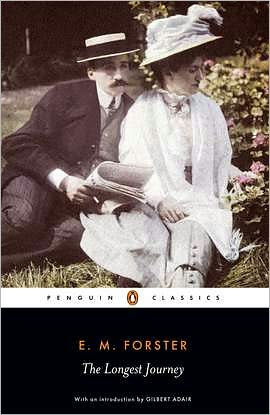The Longest Journey
The Longest Journey is a bildungsroman by E. M. Forster, first published in 1907. It is the second of Forster's six published novels, following Where Angels Fear to Tread (1905) and preceding A Room With A View (1908) and Howards End (1910). It has a reputation for being the least known of Forster's novels, but was also the author's personal favourite and one of his most autobiographical. It is the only one of Forster's novels not to have received a film or television adaptation.
1100154881
The Longest Journey
The Longest Journey is a bildungsroman by E. M. Forster, first published in 1907. It is the second of Forster's six published novels, following Where Angels Fear to Tread (1905) and preceding A Room With A View (1908) and Howards End (1910). It has a reputation for being the least known of Forster's novels, but was also the author's personal favourite and one of his most autobiographical. It is the only one of Forster's novels not to have received a film or television adaptation.
18.0
Out Of Stock
5
1

The Longest Journey
416
The Longest Journey
416Related collections and offers
18.0
Out Of Stock

Product Details
| ISBN-13: | 9780141441481 |
|---|---|
| Publisher: | Penguin Publishing Group |
| Publication date: | 10/31/2006 |
| Pages: | 416 |
| Product dimensions: | 5.14(w) x 7.78(h) x 1.01(d) |
| Age Range: | 18 Years |
About the Author
What People are Saying About This
From the B&N Reads Blog
